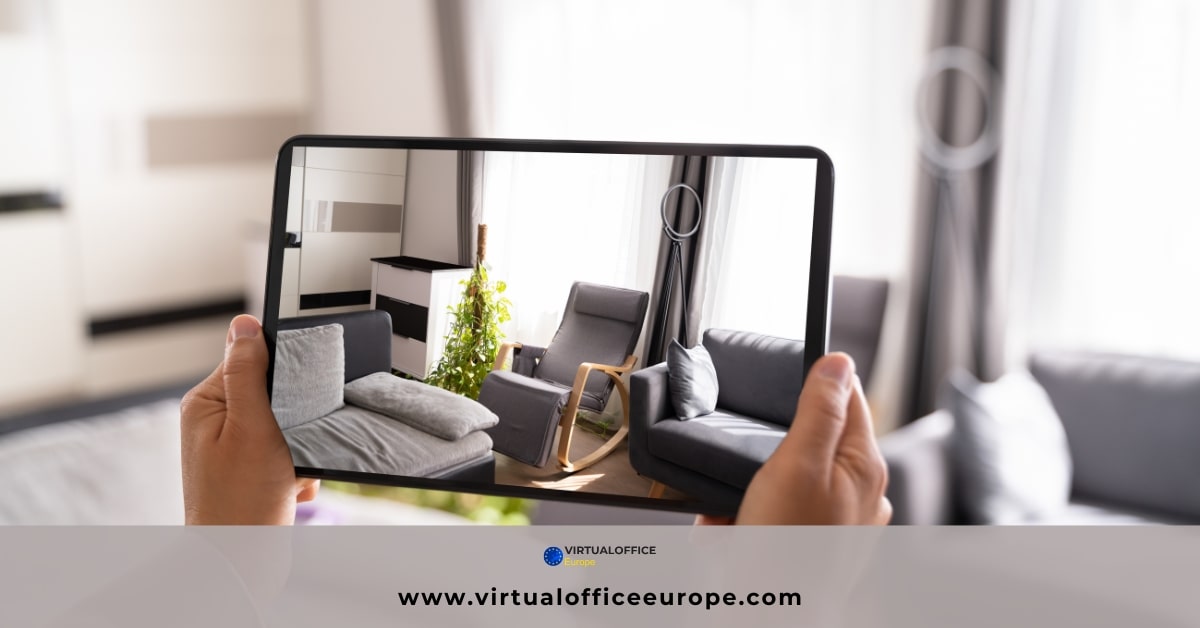In today’s ever-changing work world, it’s important to understand the difference between “virtual office” and “digital office.” Even though these terms are often mixed up, they actually refer to two different ways of modernizing how we work. Here, we will explain the differences and similarities between virtual offices and digital offices, highlighting what each offers, their benefits, and how they fit into today’s work environment.
The Virtual Office: Overcoming Physical Limits
A “virtual office” means a workplace that isn’t tied down to one place. It’s a move towards more flexible and dynamic ways of working, letting companies and professionals work from anywhere. This model moves away from the old-fashioned office setup, using online tools for talking, teaming up, and getting work done from anywhere in the world.
What’s in a Virtual Office:
- Business Address: Offers a fancy business address in a good location without the need to actually be there.
- Phone Services: Provides professional phone services, like answering calls and forwarding mail, which helps make a business look good.
- Virtual Support: Access to virtual receptionists and support services makes sure businesses run smoothly without a physical office.
- Workspace Options: Gives a choice of workspace solutions, like meeting rooms and desks, ready when needed for meetings or short-term needs.
Virtual offices meet the needs of today’s global business world, offering scalable and cost-effective options that support security and efficiency. They enable businesses to keep a professional image and run their operations without the costs linked to traditional office spaces.
The Digital Office: Using Technology to Improve
On the other hand, a “digital office” focuses on using technology to make business processes better and automated. It aims to digitize how work is done, documents are managed, and how people communicate within an existing office space.
What’s in a Digital Office:
- Document Management: Uses digital tools for keeping, finding, and managing documents, aiming to use less paper.
- Collaboration Tools: Uses software that makes it easy for employees to work together, managing projects and teamwork.
- Making Workflows Smooth: Uses technology to make operations smooth, automate repetitive tasks, and increase productivity.
The main idea of the digital office is to use technology to make physical work environments better and more effective. It seeks to update how things are done inside the office, making processes quicker and more responsive to business needs.
Virtual Offices and Digital Offices: Finding Common Ground
Even though virtual and digital offices have their own features, they share several core characteristics. Both use technology to change how businesses operate, focusing on being flexible, efficient, and innovative.
Shared Features Include:
- Based on Technology: Both rely a lot on digital tools to help with business tasks, including chatting, teaming up, managing documents, and making tasks automatic.
- Flexible and Scalable: They offer flexible and scalable solutions that change as businesses grow or shrink.
- Improving Work: The main goal is to make work processes simpler, cut unnecessary steps, and improve how much gets done by using technology wisely.
- Saving Money: Both approaches offer big chances to save money, either by cutting down on the need for physical office space or by reducing old, inefficient paper-based methods.
The Key Differencese between Virtual Offices and Digital Offices
While they share some features, virtual and digital offices have key differences that set them apart and affect which might be better for different types of businesses.
- Physical Space: Virtual offices don’t need a physical office space, while digital offices enhance a physical workspace with digital technology.
- Workspace Idea: Virtual offices change the idea of a workplace, offering solutions beyond traditional office limits. Digital offices make physical office spaces work better with digital tools.
- How They Work: Virtual offices offer a lot of flexibility, allowing businesses to operate from anywhere and scale easily. Digital offices focus on making in-house operations more efficient but might have limits due to physical space.
Choosing What’s Right for Your Business
When picking between a virtual and digital office, think about your business’s specific needs, what you’re aiming to achieve, and how your team works.
- Worldwide Team or Central Location: A virtual office is perfect for businesses wanting a global presence without being stuck in one place. A digital office suits those who need a central physical location but want to make operations better with digital tools.
- Thinking About Costs: Virtual offices are usually more cost-effective for businesses trying to cut down on expenses linked to having a physical office. Digital offices require spending on technology but can also lead to savings in the long run by making operations smoother.
- Scalability Needs: If being able to grow or shrink easily is important, a virtual office offers the flexibility to change operations without worrying about physical space. Digital offices may face limitations in terms of scalability based on available physical space.
Virtual Offices or Digital Offices? The Future is Mixed
As companies figure out how to deal with the complicated modern work scene, a mixed way that uses parts of both virtual and digital offices is becoming popular. This method lets businesses enjoy the perks of having a team that can work from anywhere in the world while making their inside processes better with digital tools in a real office.
Even though people might use “virtual office” and “digital office” to mean the same thing, looking closely shows they are different. The choice between them depends on what each business needs and wants to achieve. Whether going for the unlimited flexibility of a virtual office or making things better inside with digital tools in a real office, the main thing is to make sure your choice fits with the big goals of your company. As the way we work keeps changing, understanding these differences helps businesses make smart choices that lead to a more efficient, flexible, and tech-savvy future.












